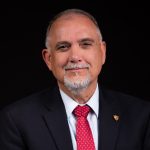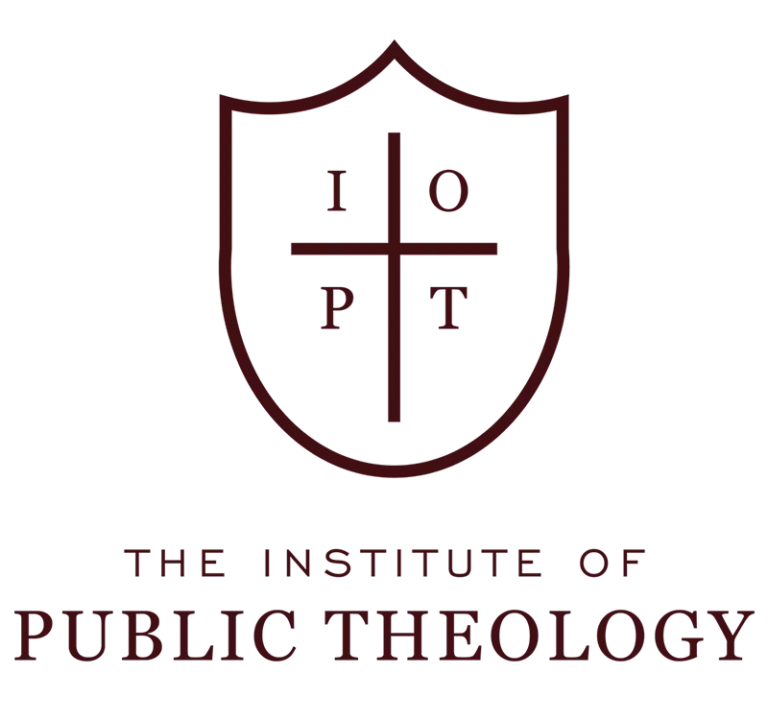The Point: When we seek Christ, we find hope.
Jesus Cleanses a Leper: Matthew 8:1-4.
[1] When he came down from the mountain, great crowds followed him. [2] And behold, a leper came to him and knelt before him, saying, "Lord, if you will, you can make me clean." [3] And Jesus stretched out his hand and touched him, saying, "I will; be clean." And immediately his leprosy was cleansed. [4] And Jesus said to him, "See that you say nothing to anyone, but go, show yourself to the priest and offer the gift that Moses commanded, for a proof to them." [ESV]
[1-4] “Matthew starts this section with miracles of healings for three people who would all have been considered unlikely from the Jewish point of view: a leper (and thus unclean), a Gentile, and a woman. They bring out something of the compassion and the wide sympathy of Jesus, as well as His power. There is an account of the miracle of the cleansing of the leper in all three Synoptic gospels [Mark 1:40-45; Luke 5:12-16], with an interesting mixture of resemblances and differences. Thus there is nothing corresponding to verse 1 in Mark or Luke. Mark differs in his word for came, and Luke has none. But the leper’s words are identical in all three (except that Mark omits Lord). Clearly the story was widely used, and the Synoptists have all told it in their own way. After Jesus had come down from the mountain (evidently the mountain He went up in 5:1), great crowds kept following Him. Matthew does not say why, but we are probably meant to see this as the continuance of the state of affairs he described previously. In due course he will come to the opposition Jesus faced and His rejection by the Jewish leaders and others, but at this point he is describing happenings in the time of Jesus’ great popularity. Matthew uses his great crowds expression to bring out the fact that Jesus had a large following at this time. Followed him may be used of adherence to Jesus, following Him as a disciple, but in such a context as this it means no more than that the multitudes were accompanying Him. Behold is Matthew’s favorite way of introducing a note of vividness into his narrative. It does not point to strict chronology and specifically does not mean that the leper came to Him just as He came down from the mountain. Matthew’s arrangement is topical: he is bringing together a number of healing stories and not necessarily saying that they all happened after the Sermon or in the order in which he relates them. It is not known for certain what a leper meant. Nowadays leprosy denotes a specific ailment, Hansen’s disease, but in ancient times, when diagnostic facilities were considerably more limited than those we take for granted, leprosy meant not only Hansen’s disease but a number of other diseases as well. Some of them were curable, and thus a procedure was laid down so that when a cure took place the cured person would be inspected by a priest who certified the cure, after which the healed person was restored to the full life of the community. But leprosy as we know it was not curable, and the dreadful physical afflictions in the advanced state of the disease were such as to give the ancients horror at it all. Since no one knew how it could be cured and since its effects were so horrible, the only treatment was quarantine. Lepers were not allowed to live in towns or villages, but had to remain outside centers of habitation. They were required to keep their distance from people, and if they happened to approach anyone they were required to call out ‘Unclean’ [Lev. 13:45-46]. Leprosy was not only a terrible disease, but it was defiling; anyone who had it was ceremonially unclean, cut off from the religious and social life of the community. On this occasion a leper approached Jesus, which must have been a fairly unusual procedure. This man came respectfully and knelt before him. It is uncertain what meaning we are to put into this action. Our problem is that it may be used of the worship of a deity or of a respectful approach to a man. If the man was recognizing Jesus as divine, then an act of worship is meant, whereas if his knowledge was more limited he is showing the respect due to a healer from whom he hoped to receive a cure. There is the same ambiguity about Lord. He may mean this as a polite form of address to a man, or he may be using it as the right term for one who was more than a man. This ambiguity is often present, for Jesus is frequently addressed by this word in this Gospel by people who believe in Him. Matthew does not tell us how the man had come to hear of Jesus, but plainly he knew enough to be impressed with His abilities to heal. He clearly had no doubts about Jesus’ healing powers, but he was not so sure whether the Lord would want to heal a person like him. Who would be interested in helping a poor leper? He does not even make a request, but contents himself with the statement, if you will, you can make me clean. The request is implied both in the man’s condition and in his confidence in Jesus’ power to heal. He does not speak of being cured but of being cleansed, and this is normally the case. Leprosy was a terrible disease, but it was also a defiling disease. Those who had it were unclean. Being freed from leprosy was different from being freed from, say, paralysis. It was spoken of in terms of cleansing, not simply of cure. Jesus could simply have spoken the healing words, but we should not miss the compassion implied in that He stretched out his hand and touched him. Nobody would touch a leper, for such a touch brought uncleanness (and guilt [Lev. 5:3]); people would also fear the possibility of contracting the disease. It must have been years since the man had experienced such contact with anyone who did not have the disease. Jesus’ answer is but two words in the Greek (identical in all three Synoptists), but those two words say all that is necessary. The first clears up the matter of Jesus’ will; it assures the leper of His willingness. The second removes the leprosy; it is a word of power, a command that the man be cleansed. The cure was instantaneous (immediately); the man was cleansed. Jesus moves on to the procedure that would be necessary to restore the healed man to a place in society. See is a verb used of ordinary sense perception with the eye, but it may also refer to taking care that something be done. Say nothing to anyone is a firm prohibition of making the miracle known. This motif is found elsewhere [9:30; 12:16; 16:20; 17:9]. It is unlikely that this is a device the Evangelists have adopted to account for the fact that a greater number did not respond to Jesus during His ministry. It is much more probably that Jesus did not wish people to misunderstand what He was about and to regard Him simply as a wonder-worker or the kind of person who would be expected to lead a revolt against the Romans in due course. He thus urged people to keep quiet about the wonderful things he had done for them. Instead of such talk (but is the strong adversative) the man must go; he should not gossip. Mark tells us that in fact the healed man did not obey this injunction, but spread abroad the fact of his cure, with the result that Jesus could no longer show Himself openly and His ministry was accordingly hindered. Jesus instructs the healed man to show yourself to the priest and offer the gift that Moses commanded in order to fulfill the requirements of the law [Lev. 14:1-32]. The word for gift is used of gifts of various kinds, but here there can be no doubt that it is a sacrifice that is meant. This could be offered only in Jerusalem, so that the man had a journey before him. This may also be part of the reason Jesus urged him not to talk about what had happened but to go to the priest; there would be a strong temptation to put off the journey and perhaps never get around to it. The sacrifice is to be offered as a proof to them, but it is not clear to whom them refers. It might be the priests, or the authorities, or people in general. There is also some doubt about the significance of the testimony. It will certainly be a public demonstration of the reality of the cure. It will also demonstrate the power of Jesus to heal and thus be a witness to Jesus’ messiahship.” [Morris, pp. 186-190]
Faith of a Centurion: Matthew 8:5-9.
[5] When he entered Capernaum, a centurion came forward to him, appealing to him, [6] "Lord, my servant is lying paralyzed at home, suffering terribly." [7] And he said to him, "I will come and heal him." [8] But the centurion replied, "Lord, I am not worthy to have you come under my roof, but only say the word, and my servant will be healed. [9] For I too am a man under authority, with soldiers under me. And I say to one, ‘Go,’ and he goes, and to another, ‘Come,’ and he comes, and to my servant, ‘Do this,’ and he does it." [ESV]
[5-9] “Jesus did not heal everyone all the time, so it is worth noting whom He chose to heal. At first glance, it seems that He chose randomly. Occasionally, He healed crowds that streamed to Him from all of Galilee [4:23-25]. But when we come to the healing of individuals, things get strange. First, He heals a leper. A leper is a social outcast, isolated from the main stream of society. Cut off from all but their fellow lepers, they have no constituency. No committee would nominate a leper for Jesus’ first public healing. The second healing seems even stranger, for Jesus helped a centurion, a commander of the Roman troops that occupied and defiled the land of Israel. Why help him? Third, he heals a woman, Peter’s mother-in-law [14-15]. Fourth, he heals a demon-possessed man [28-32]. Given that Satan cannot simply take over people at will, the demonized man had somehow opened himself to Satan’s control. Considering these people together, we wonder why Jesus bestowed His favor so chaotically, on people who seem not to deserve it. For He heals no one who is holy or famous or powerful. But perhaps the word ‘deserve’ sets off an alarm. Does anyone deserve a miracle? Grace always goes to the undeserving, does it not? The very question ‘Who deserves a miracle?’ gets things backward by focusing on men and women rather than Jesus and His kingdom. Matthew carefully links His miracles to the coming of the kingdom. Matthew twice says, he went throughout all Galilee, teaching in their synagogues and proclaiming the gospel of the kingdom and healing every disease and every affliction among the people [4:23; 9:35]. Matthew repeats this statement right before the Sermon on the Mount and right after the series of miracles that starts in chapter 8. By repeating this summary of Jesus’ ministry – He teaches, preaches the kingdom, and heals – Matthew invites us to see His teachings and miracles together. Both proclaim that Christ is king. His words and His works both bear His authority. His kingdom embraces mind and body, spirit and flesh. The miracle of the healing of the centurion’s servant takes place in Capernaum, a town on the northern tip of the Sea of Galilee. Jesus adopted Capernaum as His new hometown and the center of His ministry in Galilee. Capernaum was a trading city that stood at a crossroads, so it was logical for the Romans to have a tax station there and to support it with a garrison of imperial troops. The leader of the garrison was a centurion. A centurion commanded the basic fighting unit of the Roman army. The most talented soldiers became centurions. They were the backbone of the army, maintained discipline, and gave orders. Central players in the alien occupation of Israel, centurions were roughly equivalent to a Nazi captain in the Netherlands or France in World War II. Why would Jesus help such a man? The centurion approaches Jesus and says, Lord, my servant is lying paralyzed at home, suffering terribly. Lord is a term of respect. It is a remarkable statement coming from a centurion to a Jew. He may not fully grasp who Jesus is – even the disciples do not yet know – but he is on the right path. We do not know what disease afflicted the centurion’s servant, but we understand the emotion. Centurions were experienced working officers. They were also paid well, but they could not legally marry during their twenty years of military service. Centurions might take a concubine, but not a wife and family. They also did not fraternize with regular soldiers, whom they had to discipline. So a servant might be his closest ‘family’. Indeed, Matthew uses the term of affection (pais) which either means a child or a close servant, rather than the generic term for a servant or slave (doulos). Jesus offers to come to the centurion’s house to heal the servant: I will come and heal him. The centurion understands that Jesus coming to his house would violate Jewish traditions since Jews were forbidden to enter the house of a Gentile. Of course, Jesus touched a leper for his first miracle, so we know Jesus does not let traditions bind Him. Since the centurion knew Jewish customs, he replies Lord, I am not worthy to have you come under my roof. These words may indicate either that the centurion wanted to spare Jesus trouble with the Jewish leaders or they may indicate a deeper humility on the part of the centurion. He knows Jesus owes him nothing. He knows Jesus is a man of God and a healer of Israel. He is asking for a blessing that first belongs to God’s people, not to him. The centurion continues, but only say the word, and my servant will be healed. A word will be enough for him because he understands how authority works. He understands that commands have power, even at a distance [9]. We do not know exactly what the centurion grasped at this stage, but he clearly understood Jesus’ power is so great that even His word has great power. Evidently, the centurion had meditated on what he heard about Jesus in light of his experience in the Roman system. That system held that each command came down in an unbroken chain that began with the emperor himself. The centurion believed Jesus had a similar chain, beginning with God Himself. As the soldier’s word had the emperor’s authority, so Jesus’ word had God’s authority. The centurion realized Jesus might heal with a touch, but that He did not have to heal by a touch. The power did not lie in Jesus’ hand, though many people thought it did. The power did not reside in Jesus’ person or garments. Many ancient folk thought such things; that is why people wanted to touch Jesus’ garments [9:21; 14:36]. For their sake, Jesus often touched people before He healed them, but the centurion knew better. Matthew also wants us to grasp the extent of Jesus’ authority. Without stating the doctrine in theological terms, Matthew shows us who Jesus is. His power extends wherever His will ordains it. He is omnipotent and can project His power wherever He wishes, since He is also omnipresent. He partakes of the distinctive attributes of God, for He is God. The centurion apparently meditated on his life experience and put it to theological use. His experience with authority taught him something about God’s authority. We too can meditate on our life experience and put it to good use, whatever our calling. For example, scientists who have an eye for it can see God’s design in creation. A believing scientist may have a special eye for the capacity God has given creation to purify itself. At a simpler level, a mother who cares for little children has a unique opportunity to learn about God’s unconditional love for us. Babies are a bottomless pit of need. After we meet their needs, they do not write thank-you notes. They do not return the favor. Yet we love them fiercely and would do anything for them. We gladly sacrifice for them, even fight for them. It is a worthy challenge to learn to use our vocation for meditation on the goodness and power of God.” [Doriani, pp. 323-328]
Healing of the Servant: Matthew 8:10-13.
[10] When Jesus heard this, he marveled and said to those who followed him, "Truly, I tell you, with no one in Israel have I found such faith. [11] I tell you, many will come from east and west and recline at table with Abraham, Isaac, and Jacob in the kingdom of heaven, [12] while the sons of the kingdom will be thrown into the outer darkness. In that place there will be weeping and gnashing of teeth." [13] And to the centurion Jesus said, "Go; let it be done for you as you have believed." And the servant was healed at that very moment. [ESV]
[10-13] “Since the officer is a Gentile, his astonishing faith becomes an opportunity to teach. Jesus turns to those who are following Him, which likely includes both the inner circle and others who are less committed to Jesus. He tells these followers the shocking news that He has not encountered faith such as this Gentile officer’s anywhere in Israel. He then speaks of the future kingdom as a time when many from the east and the west will recline with Abraham and the patriarchs, enjoying the great eschatological feast. Jesus’s prediction is reminiscent of biblical teaching on the gathering of Israel from all over the earth and the future worship of God by Gentiles all over the earth. In striking contrast to the eschatological bliss shared with the patriarchs, the sons of the kingdom will be excluded and punished. Sons of the kingdom is a Semitic idiom referring to those who would be the expected heirs to God’s eschatological blessings. Outer darkness refers to the removal of sinners to a place very far from the light of God’s gracious presence. Weeping and gnashing of teeth vividly portrays the unspeakable anguish of separation from God. This frightening imagery marks one of the most sobering moments of Matthew’s story of Jesus. The motif of eschatological reversal is present here, since God’s people who presently mourn and weep will do so no longer when they inherit the kingdom. Jesus now turns from addressing His evidently stunned followers to the centurion, whose surprising faith led to the shocking teaching of 8:10-12. He tells the man to go home since his request will be granted just as he believed. At this moment, as he expected, his servant is healed, not by touch, as in the case of the leper, but at a distance. As in a similar story in John 4:46-53, the precise timing and the distance are noted to underline the supernatural authority of Jesus.” [Turner, pp. 232-234]
Questions for Discussion:
1. Think about how different the two people were who came to Jesus in these verses. What do we learn from Jesus concerning how we are to treat people no matter what their background is? Look at the different main characteristics that each one shows in coming to Jesus: courage for the leper; and humility for the centurion. What do we learn about how we should approach Jesus with our own needs?
2. Consider how different our Lord’s methods were in dealing with these two people. What does this teach us about His character, His love, and His power? Think about what it would have meant to the leper for Jesus to have touched him. Here was a man whom society viewed as unclean, who was not allowed to be around other people. There is no telling how long it had been since the leper was touched by another person other than another leper, yet Jesus touches him. Then consider the centurion. An outcast in a different sense, being a Gentile approaching a Jewish teacher/healer. Look at the way Jesus adapts the way He deals with people based upon their background and needs. Pray that God will enable you to adapt your approach to people based upon their background and needs.
3. What was so remarkable in the centurion’s faith as to elicit Christ’s great commendation in verse 10? Contrast John 4:48. Note how the statement of verses 11-12 anticipates the revolutionary developments recorded in Acts 13:45-48.
References:
Matthew, volume 1, Daniel Doriani, P & R Publishing.
The Gospel of Matthew, Leon Morris, Eerdmans.
Matthew, David Turner, BENT, Baker.


























